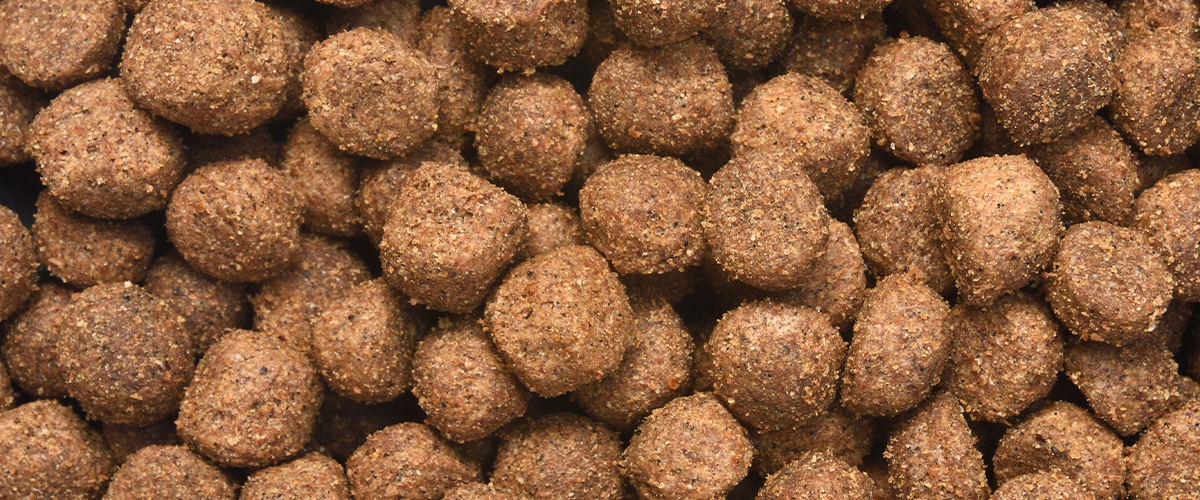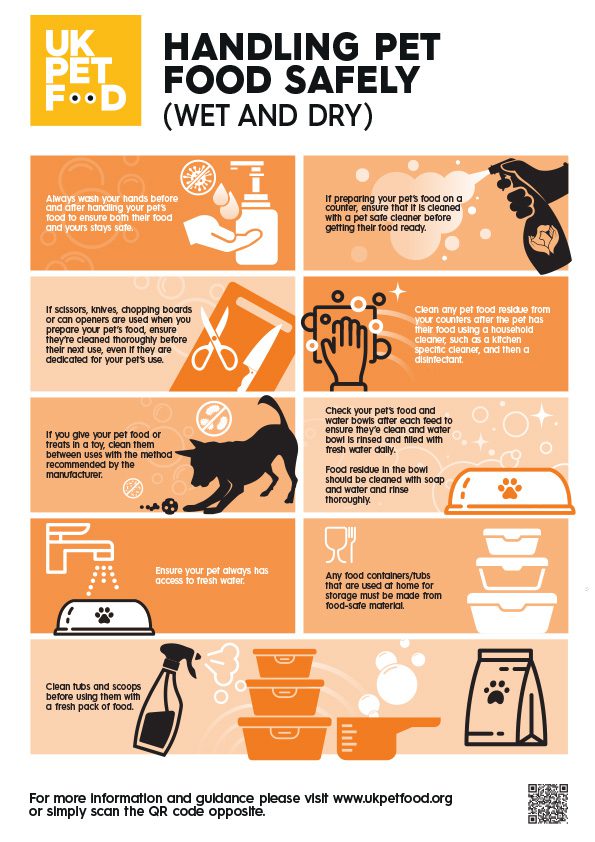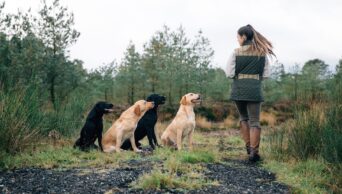The importance of storing your dog’s food correctly
Blog , +1
August 25, 2023

It’s no big deal if we forget to put our bread in the breadbin overnight; a few minutes in the toaster and it’s ready to be used in a tasty meal. But what about our dog’s food? Why is it important to store the food correctly and what can we do to ensure that it stays as fresh as possible until they are ready to tuck in?
Where does my dog’s food need to be stored?
Dog food tends to fall into three main categories; wet, dry or raw and these all have different storage requirements. Raw food will need to be frozen, whereas dry kibble and wet food will need to be stored in cool, dry conditions, out of direct sunlight and away from hungry mouths!
Is there such thing as poor storage?
Poor storage can cause the use by date to become obsolete, as the food will not reach this date if kept in conditions which the manufacturer has advised against.
Poor storage can also reduce the palatability, affect key vitamins and minerals, and enable pests (such as flour beetle and mice) to contaminate it.
At best the food will not be as tasty and at worst, can cause your dog to become poorly.
Top tips for correctly storing your dog’s food:
1. Check the best before date and the quality of the packaging when you buy the food
If the use-by date is unclear, or the packaging appears to be damaged or discoloured, return the food to the retailer that you purchased it from.
Your storage conditions won’t matter if the food is already compromised to begin with.
2. Look for the manufacturer’s storage guidelines on the packaging
The manufacturer of the food will know the best way to keep their food in the best condition possible, so it’s well worth following their advice.
3. Store dry kibble diets in a container which cannot be accessed by pests
Mice, slugs and other pests are always on the lookout for food and your dog’s food will be very appealing to them.
The container must be produced for food storage purposes and BPA free. For kibble diets, keep the food in the bag that it came in rather than tipping it into the bin, and roll the top of the packaging down tightly, squeezing out any trapped air. These measures will also minimise the likelihood of foreign bodies contaminating the food.
4. Keep wet foods in a sealed container in the fridge after opening
Wet diets must be kept in the fridge between mealtimes as bacteria will grow on the food quickly at room temperature, especially in warmer weather.
The food must also be used within 48 hours of opening the packaging. If this is not possible then you can portion the food up and freeze it, remembering to defrost it fully and serve immediately.
5. Keep their feeding bowl clean
We would recommend cleaning their bowl every day with hot, soapy water. Good hygiene practise means that the food will always be in the best environment to be as appealing as possible.
6. Using Feeding cups
In an age where dog obesity is very much on the increase, we are doing all that we can to ensure that people are conscious of exactly how much they are feeding their dog. Our feeding cups are a great, mess-free way to serve up your dog’s food, but without measurements on them as we recommend the food is weighed using accurate scales to ensure you are not over-feeding, or even under-feeding!
As with all plastic cups they can break or become brittle over time so make sure to check your cups before and after use and to store them out of reach of your dog.
MORE Information can be found via UK Pet Food
(previously known as the Pet Food Manufacturers’ Association or PFMA)

Storing their food carefully doesn’t just benefit your dog. It also saves you time and money from having to replace unappetising food, especially as toasting isn’t an option!
If you’d like any further advice on keeping your dog’s food as fresh as possible, or which of our diets to feed, then contact our nutrition team who will be happy to help.


